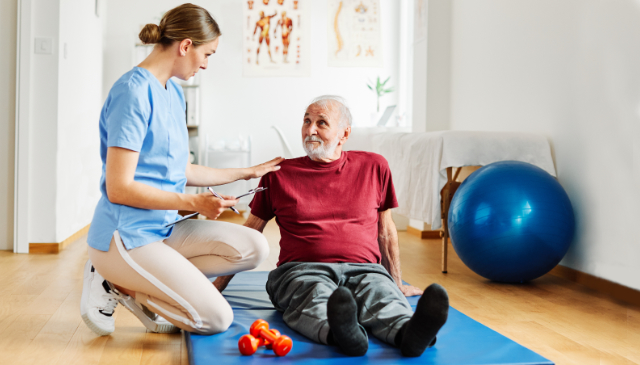Health Blog: Solutions & Wellness Tips
Adding Hands-On Therapy Is Beneficial For Chronic Ankle Instability

Most patients will make a complete recovery after sustaining an initial ankle sprain, but this is not always the end of the story. Up to 70% of patients who experience a lateral ankle sprain will go on to develop a condition called chronic ankle instability, a condition in which there’s an increased risk for repeat ankle sprains and recurring symptoms (pain, weakness, giving way) in the future. Patients with chronic ankle instability experience changes in the function of their nervous system that may lead to decreased postural control, joint position awareness, and more ankle instability. The combined result of these changes is a higher risk for a second ankle sprain to occur, and with each additional sprain, this risk continues to rise.
This underlines the importance of proper rehabilitation after the first ankle sprain, which can significantly reduce the risk for chronic ankle instability. As we’ve discussed, the best way to accomplish this is through a personalized rehabilitation program with a physical therapist. All rehab programs are personalized for each patient, but most will include a variety of interventions like strengthening and stretching exercises, manual (hands–on) therapy, and balance training.
Combining manual therapy and exercise–based rehabilitation improves outcomes
Physical therapy is also the best option if chronic ankle instability develops, and a recently published study shows why. For the study, researchers aimed to determine whether adding manual therapy to an exercise–based rehabilitation program resulted in greater improvements in patient–reported outcomes than exercise–based rehabilitation alone.
To answer this question, they performed a search of several databases and screened the results using specific criteria. Of the 28 studies that were identified, only three fit the inclusion criteria. The three included studies involved either two or three treatment groups that all performed exercises, with one group in each study also receiving manual therapy from a physical therapist. The exercises featured in these studies were primarily designed to increase ankle strength and balance, and one of the exercises included was the single leg balance exercise described in second post. All exercises increased in difficulty each week as the program progressed.
A thorough review of these studies showed that adding manual therapy to exercise–based rehabilitation led to greater improvements in patient–reported outcomes compared to exercise–based rehabilitation alone. The quality of all three studies included was rated as high, which further strengthens their findings. As a result of this high–quality evidence, an A grade recommendation was given that there is likely a benefit of adding manual therapy to an exercise–based rehabilitation program for chronic ankle instability.
Therefore, if you’ve recently suffered a first or repeat injury, or if you’re dealing with any other type of ankle or foot pain, we strongly recommend that you come in for a visit and get started on a rehabilitation program that will reduce your risk for future complications.



